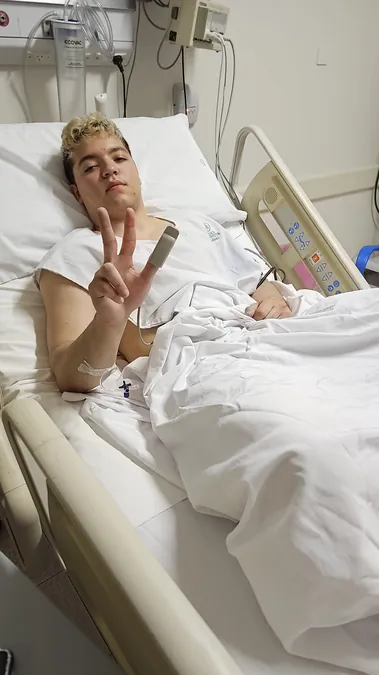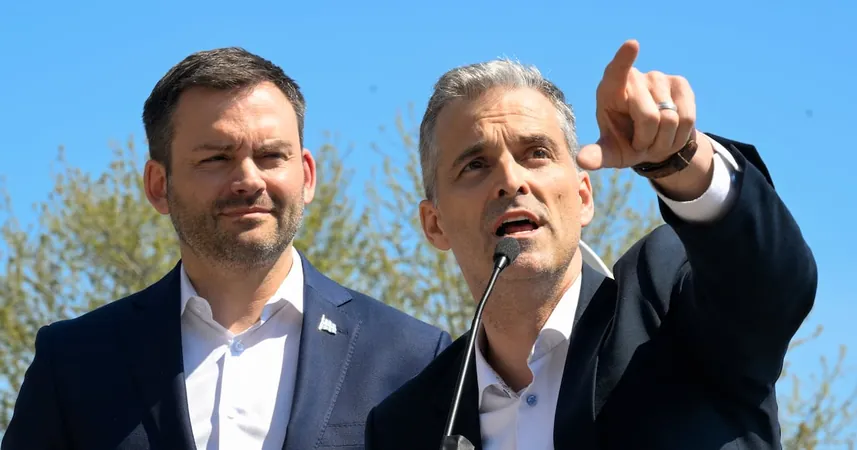
Stroke Month: A Young Montrealer's Wake-Up Call About Strokes
2025-06-04
Author: Noah
A Shocking Reality at a Young Age
June is Stroke Month, and one young man from Montreal, Alberto Viloria, is on a mission to highlight the critical warning signs that strokes can strike anyone, regardless of age.
At just 24 years old, Viloria experienced a devastating hemorrhagic stroke shortly after reuniting with his father in Argentina. What was meant to be a joyful reunion turned into a life-altering event when he woke up feeling strange.
"One side of my face felt numb, and I couldn’t feel one of my arms," Viloria recalls. He initially brushed off the symptoms, but the true alarm rang when he tried to sip some water and it spilled uncontrollably.
The Urgency of Awareness
This shocking experience serves as a poignant reminder that strokes can affect anyone, including the young. In Canada alone, over 108,000 strokes occur each year, yet more than one-third of Canadians remain unaware of the common signs. Surprisingly, 70% have little knowledge of stroke and heart disease risk factors, according to Heart & Stroke.
Dr. Catherine Legault, a stroke neurologist at McGill University Health Centre, emphasizes the urgent need for awareness, especially during Stroke Month. "Stroke is a common disease affecting all ages and can often be prevented," she states. A growing number of young individuals are experiencing strokes, often due to hidden health issues.
Understanding Stroke Symptoms
Dr. Legault points out that strokes are caused by either blocked blood vessels in the brain or ruptured vessels leading to hemorrhage. Although older individuals generally have more risk factors such as hypertension or diabetes, many young patients have strokes due to unrecognized congenital issues.
She stresses the importance of recognizing stroke symptoms, stating that they manifest similarly in both young and older patients. "It’s heartbreaking when young patients arrive late, not realizing they are having a stroke," she warns.
Beat the Clock: The FAST Method
Recognizing stroke symptoms can save lives, and Dr. Legault urges everyone to remember the FAST acronym: **F – Face:** Is one side drooping? **A – Arms:** Can they raise both arms? **S – Speech:** Is it slurred or unclear? **T – Time:** Call 911 immediately.
Additional signs can include sudden vision loss, severe dizziness, or unexpected sensory changes. Acting quickly is paramount; waiting can cost valuable time for treatment.
The Heart-Stroke Connection
Heart & Stroke illuminates the strong relationship between heart health and stroke. Conditions like atrial fibrillation can significantly increase stroke risks, while strokes themselves can lead to heart complications.
Prevention Is Key
Dr. Legault reminds us that many strokes are preventable through lifestyle changes and regular medical care. Staying active and managing health risks are crucial. Heart & Stroke reports that up to 80% of premature strokes could be avoided with healthy habits.
Surviving Stroke: Hope Amidst the Challenges
Stroke remains a leading cause of death and disability in Canada; however, survival rates are on the rise thanks to public awareness and advancements in medical treatment. Dr. Legault notes that clot-busting medications and surgical options have revolutionized stroke care.
"Families are becoming more proactive. Identifying symptoms and acting fast has made a significant difference in outcomes," she observes.
Viloria’s Journey of Recovery
After surviving his stroke, Viloria underwent two surgeries to correct the underlying malformation. The months that followed were a challenging journey of recovery.
Reflecting on the experience, he says, "It happened during a vulnerable moment just after having the time of my life. It taught me not to take my body for granted.
Viloria now advocates for awareness, stressing that strokes are not just an older person's issue: "My message is simple: be careful, be aware, and learn to recognize the symptoms."









 Brasil (PT)
Brasil (PT)
 Canada (EN)
Canada (EN)
 Chile (ES)
Chile (ES)
 Česko (CS)
Česko (CS)
 대한민국 (KO)
대한민국 (KO)
 España (ES)
España (ES)
 France (FR)
France (FR)
 Hong Kong (EN)
Hong Kong (EN)
 Italia (IT)
Italia (IT)
 日本 (JA)
日本 (JA)
 Magyarország (HU)
Magyarország (HU)
 Norge (NO)
Norge (NO)
 Polska (PL)
Polska (PL)
 Schweiz (DE)
Schweiz (DE)
 Singapore (EN)
Singapore (EN)
 Sverige (SV)
Sverige (SV)
 Suomi (FI)
Suomi (FI)
 Türkiye (TR)
Türkiye (TR)
 الإمارات العربية المتحدة (AR)
الإمارات العربية المتحدة (AR)